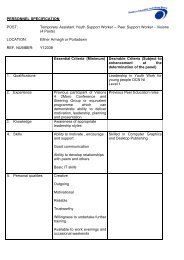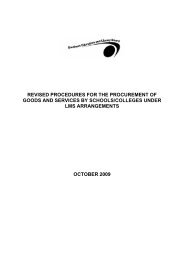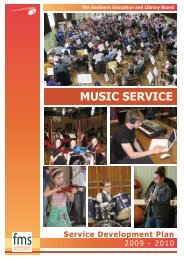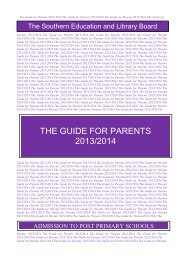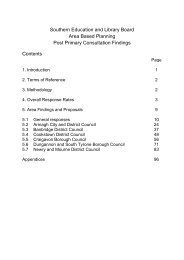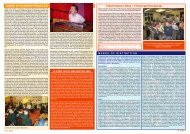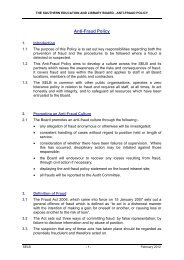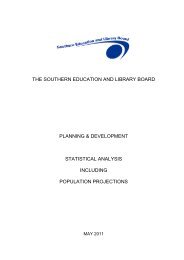ADHD Guide 4 Schools new - Southern Education and Library Board
ADHD Guide 4 Schools new - Southern Education and Library Board
ADHD Guide 4 Schools new - Southern Education and Library Board
Create successful ePaper yourself
Turn your PDF publications into a flip-book with our unique Google optimized e-Paper software.
<strong>ADHD</strong> <strong>Guide</strong> 4 <strong>Schools</strong> <strong>new</strong> 25/5/04 8:16 pm Page 26<br />
Attention Deficit Hyperactivity Disorder<br />
A Practical <strong>Guide</strong> for <strong>Schools</strong><br />
Behaviour programmes<br />
Behaviour programmes are useful for many children who find it hard to comply<br />
with the expectations of school, because they:<br />
Help the child to focus on specific targets<br />
Shift the emphasis from bad to good behaviour<br />
Impact positively on behaviour in class, self-esteem & peer relations<br />
N.B. It is important not to confuse behaviour programmes with education<br />
plans. The behaviour programme is one possible strategy to support the child<br />
in achieving the behavioural targets on their education plan.<br />
There are many ways to set up a programme; this is just a suggestion.<br />
Firstly, think carefully about the behaviour the child is currently displaying<br />
<strong>and</strong> the behaviours that you wish they were displaying! Consider the age<br />
<strong>and</strong> ability of the child before deciding how many targets to work on. For<br />
relatively able children, from late Key Stage 1 right through to secondary<br />
age, it is often good to work with 3 targets.<br />
1. Something the child consistently achieves already (you may have<br />
to think very hard about this one!!!)<br />
e.g. I am kind to my friends<br />
2. Something the child sometimes manages<br />
e.g. I finish my work<br />
3. Something that’s a bit more difficult but not impossible<br />
e.g. I put up my h<strong>and</strong><br />
Display these targets prominently near the pupil’s desk <strong>and</strong> on the programme<br />
chart or diary. If possible involve the pupil in drawing up the targets so that<br />
they feel some sense of ownership of them (while keeping the above principles<br />
at the back of your mind!).<br />
Divide the day into manageable chunks of time <strong>and</strong> encourage the pupil,<br />
for each period of time, to achieve their targets. At the end of each period<br />
(e.g. half hour) record on the child’s chart which targets they have<br />
achieved. Clearly this is easier in secondary school because the day is<br />
already divided into classes.<br />
23




